INDIAN OCEAN TRAVEL by TOURISMER
INDIAN OCEAN TRAVEL by TOURISMER

Responsible travel Tasmania
Tasmania, an isolated island state off the southern coast of Australia, is famous for its vast wild and rugged regions, largely protected within parks and reserves. Wild and splendid, distant but welcoming, the Australian archipelago is a real treasure island.
Despite its name, the Tasmanian Devil is actually shy, suspicious and only attacks humans if they feel threatened. A half-deserved stormy reputation: legend has it that the devil takes his name from his shrill cry which frightened the first European settlers when they heard it.
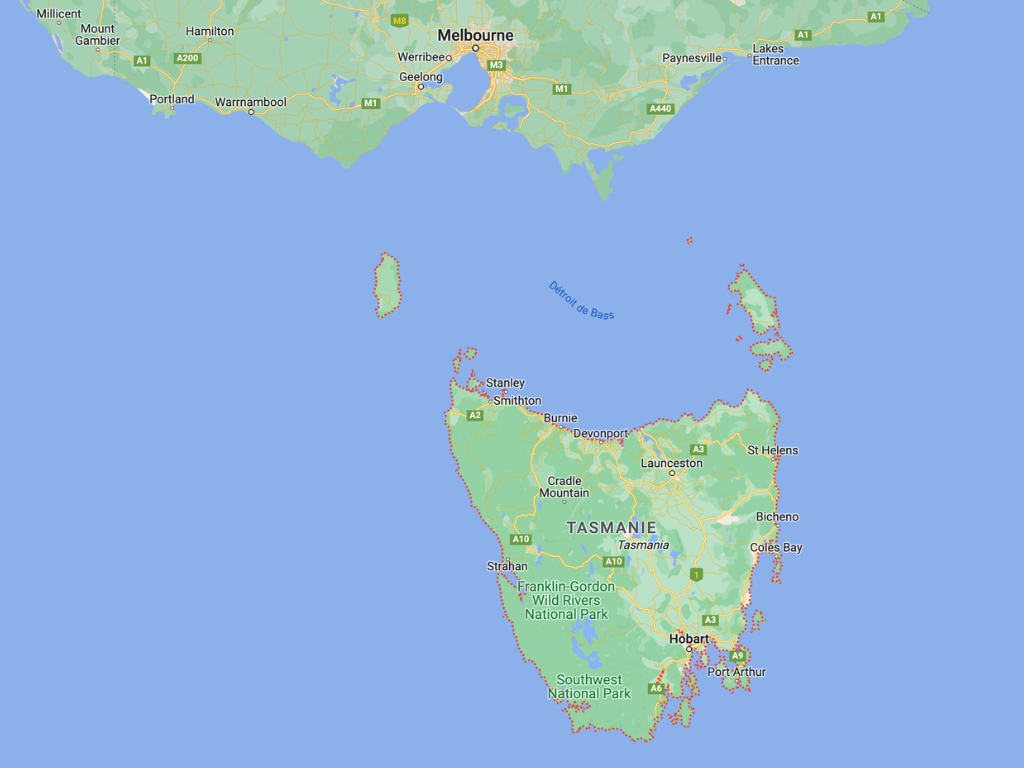

Tasmania, a province of Australia, benefits from its exemplarity in terms of reflection and awareness-raising, marketing and management actions in ecotourism. As early as 1991, a national strategy for ecotourism, unique in the world, led to the creation of the NGO Ecotourism Australia (formerly Australian Ecotourism Association).
We are supporting


Tasmania's capital offers historic sites, stunning natural scenery and vibrant neighborhoods.
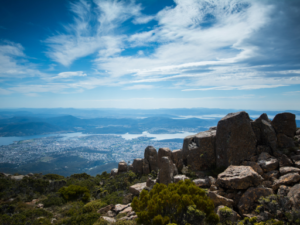 The view of Hobart: Mount Wellington. Known to locals as The Mountain, the 1,271-meter peak offers sweeping views of the city. You must see the Houses of Parliament and the Victoria Docks, and stroll through the stunning Royal Botanic Gardens of Tasmania.
The view of Hobart: Mount Wellington. Known to locals as The Mountain, the 1,271-meter peak offers sweeping views of the city. You must see the Houses of Parliament and the Victoria Docks, and stroll through the stunning Royal Botanic Gardens of Tasmania.
The flagship of contemporary art is in Hobart, Australia's craziest museum: captivating and deceptively subversive!

Port Arthur Historic Site in Lutruwita/Tasmania is one of Australia's favorite tourist destinations. Located just 90 minutes from Nipaluna/Hobart by road, it is a place of global significance – one of 11 places that make up Australia's UNESCO World Heritage Convict Sites.
Port Arthur Penal Colony began life as a small logging station in 1830 and quickly rose to prominence within the colonies. Shipbuilding was introduced on a large scale in Port Arthur to provide selected convicts with a useful skill they could take with them when released.
Port Arthur's story did not end with the kidnapping of the last convict. Almost immediately the site was renamed Carnarvon and during the 1880s land was parceled out and auctioned off, with people settling in and around the old site.

Freycinet has global appeal, it is iconic, memorable and breathtaking. The park is best known for the breathtaking beauty of Wineglass Bay, its crystal clear waters and curvaceous white sand beach is one of Tasmania's most famous sights.
Beyond Wineglass Bay, there is much more to discover in Freycinet. The diversity of the coastal landscape is spectacular, with rocky coves and crashing waves at one corner, and sheltered bays and sandy beaches at the other. As you explore the park, the Hazards – a dramatic granite mountain range that rises dramatically from sheltered turquoise bays – provide a breathtaking backdrop that is never far from view. Although one of Tasmania's most popular national parks, it's still possible to find solitude in the variety of experiences that await you at Freycinet National Park.

Cradle Mountain-Lake St Clair National Park is distinguished by dramatic jagged peaks, glacial lakes, unique grasslands and ancient rainforest. Its most famous sites are the Cradle Mountain (Cradle Mountain) in the north, and Lake Saint Clair in the south, the deepest lake in Australia. The park contains many hiking trails. The most famous is theOverland Track which crosses the park from north to south, connecting Ronny Creek, not far from Lake Dove, to Cynthia Bay of Lake Saint Clair over a distance of 65 km.
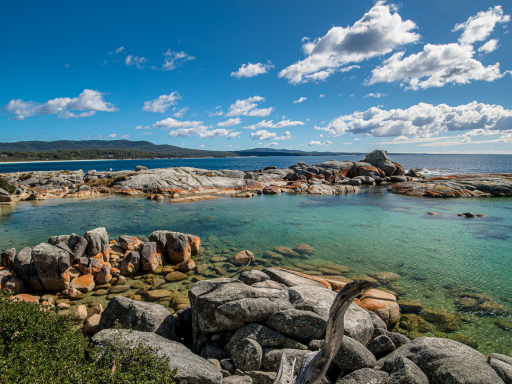
The name of the bay was given to it by the captain of HMS Adventure Tobias Furneaux in 1773 who saw native fires on the beaches there. Bordering the northeast coast of Tasmania, the Bay of Fires is that perfect combination of white sand beaches, azure seas and granite rocks splashed with orange lichen.
Campgrounds sit behind beautiful beaches and there are myriad ways to enjoy or explore the coast: walking, mountain biking, taking a cruise or just laying on a beach towel. Fittingly, the larapuna region, which includes the Bay of Fires, is the setting for one of Tasmania's earliest Aboriginal tourism ventures.
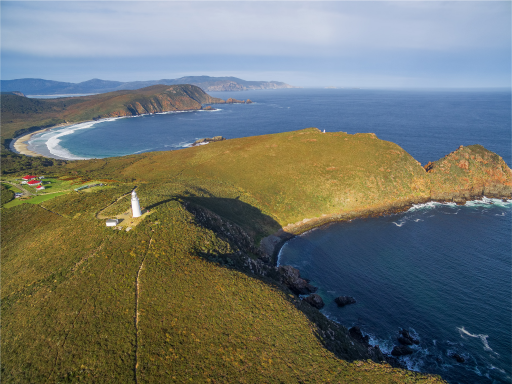
Bruny Island was occupied by Tasmanian Aborigines until the arrival of Europeans. Abel Tasman landed in the vicinity of the island in November 1642. The , Cook released at Adventure Bay with the Resolution and the Discovery for two days. The tree on which he carved his initials was destroyed in a forest fire in 1905; it is now replaced by a commemorative plaque. Bruny Island is made up of two islands, North Bruny and South Bruny, connected by the sandy isthmus of Saint-Aignant. The vegetation consists mainly of pastures and eucalyptus forests. Apart from the two beaches of Adventure Bay and Cloudy Bay, the coast opening out to sea is steep, with dolerite cliffs overhanging the sea at more than 200 meters. The coast facing the canal is more hospitable and offers several sheltered bays.
Official language: English.
Tasmanian languages are the indigenous languages of the island of Tasmania, used by Tasmanian Aborigines. These languages were last spoken as languages of daily communication in the 1830s, until Fanny Cochrane Smith, the last Tasmanian speaker, died in 1905. In 1992 a program was launched to to reconstruct a vehicular Tasmanian language, Palawa Kani, as part of a nationwide language recovery programme.
In Tasmania, the largest religious group is Anglican (14.4%, followed by Catholic 12.7%, Hinduism 2% and Islam 1%, while 49.9% of people have no no religion.
Music
Tasmania has a variety of musical genres, ranging from the Tasmanian Symphony, to a number of small bands, orchestras, quintets, and solo artists who have a varied repertoire across the state. Tasmania is also home to a number of composers such as Constantine Koukias, Maria Grenfell and Don Kay, who is the patron of the Tasmanian Composers Collective. Tasmania also hosts the IHOS Music Theater and Opera and gospels, including the Southern Gospel Choir. Death metal band Psycroptic is also from Tasmania.
Literature
Tasmania is home to a growing literary culture. here are some English titles: For the Term of His Natural Life by Marcus Clarke (1846-1881), The Sound of One Hand Clapping, Gould’s Book of Fish by Richard Flanagan (1961-) and The Year of Living Dangerously by Christopher Koch (1932-2013). Among the fictions are children's books like Tiger Tale by Marion and Steve Isham.
During the colonial period, typical English cuisine was a standard. The arrival of immigrants led to the appearance of a new cuisine which spread throughout the restaurants. Scattered throughout Tasmania are many wineries, and Tasmanian beer brands such as Boags and Cascade are known on the main Federation Island as well. King Island off the northwest Tasmanian coast has a reputation based on its cheeses and dairy products.
Some emblematic dishes:
Meat Pie
It is a meat pie with the specialty of lamb meat. You can also find tomatoes, carrots, and fresh mint.
Fish and chips made in Tasmania
Based on fish such as shark, barramundi, or better Gemfish, a fish with a subtle flavor. Originality: beer to make the dough that will include the fish. It can be accompanied by Tasmanian berry, a pepper with a powerful and slightly fruity taste.
Kangaroo stew
The stew simmers for at least 1.5 hours: made with kangaroo, cumin, coriander, paprika, garlic, tomato and lemon paste, some artichokes and black olives.
Tasmania has 19 National Parks, here is a selection:
If there's one place that's particularly good for hiking, it's Tasmania. The island, which is one of the smallest states on the continent, enjoys a unique landscape.
Trekking in Tasmania allows you to see a wide variety of landscapes in a few kilometers. Many tourists go there to camp in the middle of nature, between two walks.
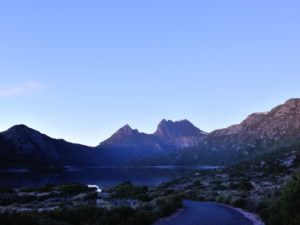 If you only have to do one, choose one of the hikes in the heart of Cradle Mountain National Park.
If you only have to do one, choose one of the hikes in the heart of Cradle Mountain National Park.
Perhaps the most beautiful walks are those along Tasmania's beautiful coastlines. Sometimes very easy on the beach, sometimes very steep from the top of the cliffs, they all provide breathtaking views.
Some hikes:
The West Coast Wilderness Railway is a reconstruction of the Mount Lyell Mining and Railway Company Mount Lyell Railway in western Tasmania between Queenstown and Regatta Point, Strahan. The railway is significant because of its Abt cog system for conquering mountainous terrain through the rainforest, with original locomotives still in service on the railway today. Now operating as a tourist experience focused on sharing the history of Tasmania's west coast, the original railway began operations in 1897 as the only link between Queenstown and the Port of Strahan.

Find more updated information on Tourism in Tasmania in our Blog Tourismer.io

Working with Tasmanian communities to care for Tasmania's unique natural environment, so future generations can stay connected to some of the world's most spectacular wildlife, forests and oceans.